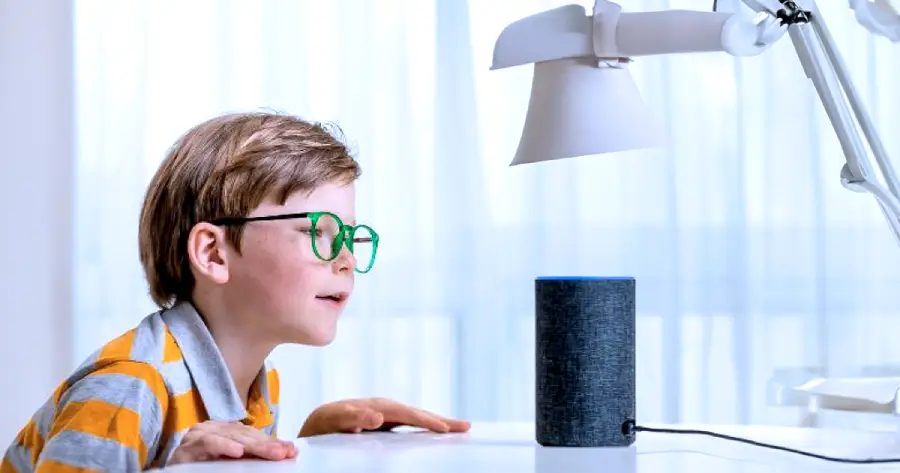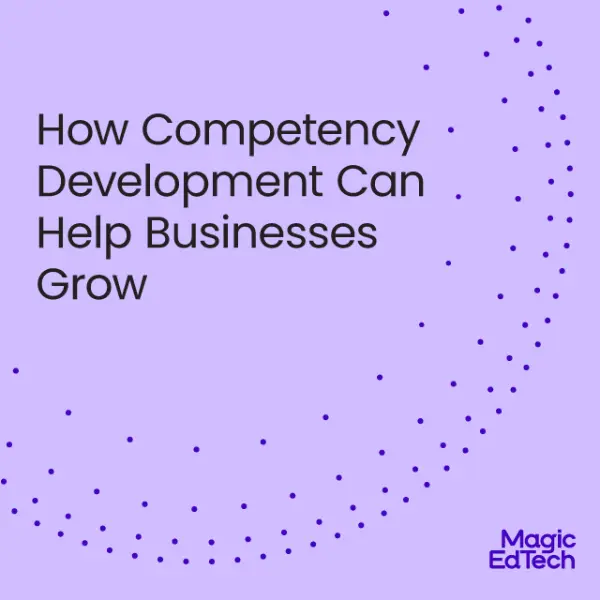The Promise and Power of Voice-Driven Teaching Assistants
- 9 October, 2023
- Reading Time: 7 mins
Recent tech advancements have powered the transformation of education. Take, for example, the global voice recognition tech market that reached 12 billion U.S. dollars in 2022.
One of the most promising developments is the emergence of voice-activated digital teaching assistants. In fact, the volume of smart speaker units will increase considerably to over 270 million in 2028.
AI-powered tools have the potential to reshape the way we teach and learn and offer a wide range of benefits for educational technology companies, school administrators, special education programs, language learning platforms, and content developers.
Why Voice-Activated Digital Assistants Matter
In the past, each generation tried to make learning and sharing information faster and better than the one before. But today, things are changing, much quicker than ever.
Voice technology lets students use their voices to interact with devices instead of screens and teaches them skills like asking questions and listening carefully.
For example, the Garnet Valley School District, started using Amazon’s Alexa in 2017. They teamed up with Dr. Aparna Ramanathan and Deepak Ramanathan, who created a unique tool called AskMyClass for Alexa.
This gave students a chance to solve problems, manage their feelings, and communicate better. They can also use it for breaks, countdowns, and reading books out loud. Although these devices’ voices may sound robotic now, they’re getting better.
Here are a few ways in which these assistants are making a positive impact on education.
- Enhancing Product Offerings: Educational technology companies increasingly integrate voice-activated assistants into their products to improve their offerings. Doing so gives educators and students a powerful tool for adapting to individual learning needs. These assistants offer personalized guidance, making learning more efficient and enjoyable.
- Streamlining Administrative Tasks: Administrative tasks within educational institutions can be overwhelming, leaving less time for educators to focus on teaching and students. Voice-activated assistants step in to streamline these tasks, automating processes like scheduling, data entry, and communication.
- Catering to Special Learning Needs: Voice-activated teaching assistants can cater to the unique needs of students with disabilities or special learning requirements. They assist students with visual impairments, dyslexia, mobility challenges, and more, making education more inclusive and equitable.
- Language Learning Advancements: Language learning apps and platforms have found a valuable ally in voice-activated assistants. These tools improve pronunciation, facilitate conversation practice, and enhance language comprehension. According to research, Cantonese and Brazilian Portuguese are among the most desired languages globally for text-to-speech functions.
- Bridging Educational Gaps: Voice-activated teaching assistants are instrumental in bridging educational gaps, especially in remote or underserved areas. They bring high-quality education to regions where resources are scarce, ensuring students access up-to-date content and support.
- Innovative Teaching Methods: Educators can integrate voice-activated assistants to enhance their teaching methods and provide additional support. These assistants can help teachers organize classroom activities, categorize voice notes, and follow up on students’ progress.
- Interactive and Engaging Content: Content developers leverage voice-activated assistants to make their educational materials more interactive and engaging. Content creators can collaborate with educational technology companies to integrate these assistants into their products, increasing the value they offer to educators and learners.
- Educational Entertainment: Voice-activated assistants are not limited to traditional education settings. They also enable the creation of interactive and educational entertainment experiences for children and adults. These experiences combine learning and entertainment, making education more enjoyable and effective.
Building Digital Learning Assistants Can Be Complex
Before the pandemic, lots of new internet users were kids. Their screen time has increased by 60% or more, and some kids 12 and under spend over five hours a day on screens.
Using technology is natural for kids today, but they sometimes need help using it correctly. They struggle with keyboards, menus, and all the buttons on screens.
Voice technology can make it easier for kids. But there’s a problem. While kids like to ask voice-based devices to do funny things like tell jokes or make animal sounds, they don’t always understand what kids are saying, especially when kids talk differently from adults.
While voice assistants are helpful, they have some challenges. Let’s look at them.
Unintelligible Words
Voice assistants sometimes struggle to understand words that aren’t in their dictionary. Kids’ voices are different because their vocal cords are smaller and haven’t fully grown yet. So, their speech sounds different from adults. Also, kids talk differently, changing how they talk as they grow up. This makes it hard for voice assistants to understand them.
It is even more challenging in schools because there’s noise, kids’ speech changes during the year, and many different accents and ways of talking in a typical school.
Misunderstanding Commands
You expect voice assistants to give you the correct answer when you ask something, but they don’t always understand. This ends up with you having to repeat yourself or type your request manually, which can be frustrating.
Providing the Wrong Information
Voice assistants can give wrong information because they sometimes misinterpret your question. This issue is more common when they misinterpret where the request is coming from. It can lead to repeating your question multiple times to get the correct answer.
Getting Distracted during In-Person Conversation
Voice assistants can interrupt face-to-face conversations and be distracting. Imagine talking to someone in class, and your voice assistant suddenly chimes in with a question. It can be awkward.
Software Integration Problems
Major voice assistants are integrated into many devices, but there are still issues. Sometimes, asking them to open an app on your phone may work differently than expected. Also, when using them on smart TVs, you might have to speak loudly, which can be inconvenient when others are around.
How Can Voice Technology Transform Higher Ed
Students studied in libraries, dorm rooms, or crowded cafes back then. But now, technology is changing how students learn, and voice technology is becoming part of higher education.
Universities are also looking at using voice tech in classrooms. It can help faculty control technology and make learning more interactive. Here is how voice recognition can be used in higher education.
- Smart Campus Assistants: Universities equip student housing with voice-enabled devices. Students use them to find rooms, get college information, and even listen to campus news.
- Podcasting: Podcasts are available 24/7, so students can learn whenever possible. Many universities offer free podcasts professors host, making quality learning material easily accessible.
- Revision: Professors can record lectures as podcasts, allowing students to review course content anytime. Recorded lectures can help reduce stress during exams.
- Self-Paced Learning: Voice tech provides flexibility. Students can listen to podcasts repeatedly, at their own pace, and for free. It’s more comfortable and convenient than traditional learning.
- Online Viva/Oral Exams: Voice tech can conduct oral exams remotely. Students can record their answers, and examiners can analyze them. This technology also helps transcribe spoken answers for reference.
Voice Technology Trends to Watch in Education
Voice technology improves communication through automation and offers valuable tools for students and teachers, making education more accessible and engaging. Here are some trends you should look out for in the following years.
- Comfortable Interaction: People are increasingly comfortable talking to their technology, and this trend is also entering education. Voice-activated typing tools are helping students and teachers, especially those with disabilities, complete assignments and take notes more easily.
- Voice-to-Text: Voice-to-text technology saves time when documenting meetings or presentations. It can create real-time transcriptions or captions, making content more accessible.
- Natural Learning Experiences: Voice technology offers a natural way for students to learn and share. It mimics the way children learn from the voices around them. 5G technology enhances this experience, allowing students to have more human interactions even in digital classrooms.
- Gamified Learning: Voice technology can turn quizzes into engaging games. Teachers can use voice assistants to quiz students using words, pictures, and voice commands.
- Auditory Learning: Students can access and create audio content using voice tools. They can access podcasts, record presentations, or capture environmental sounds for classroom projects.
- Teaching Assistants: Voice assistants can help teachers collect data about student progress, set reminders, and assist with assignments. They are intuitive for students to use and can be valuable in classrooms.
- Early Reading Support: Voice technology is beneficial for early readers. It can provide feedback, help correct pronunciation, and supplement teachers, making learning to read more engaging and effective.
Final Thoughts
There is no denying that voice-activated technology is becoming popular, and it does have a fair share of challenges to overcome. Educational institutions have concerns about data privacy, cyber espionage, data sharing, and constant exposure to devices even when students are not using them. But we can proactively take care of these challenges.
The only way to eliminate these concerns is to constantly test the waters and provide feedback to companies in this area. By trying out these voice assistants, you’re not just exploring a new way of learning but actively participating in the exciting evolution of education. It’s an opportunity to improve a piece of technology, reshape the educational landscape, and make it more adaptive to your needs.
So, why wait? Take that step forward and immerse yourself in the transformative potential of AI in education. Experience how these voice assistants can elevate your learning journey, making it more intuitive and enjoyable.
Did we miss something? Please share your thoughts in the comments below. If you found this post interesting, share it with everyone.





